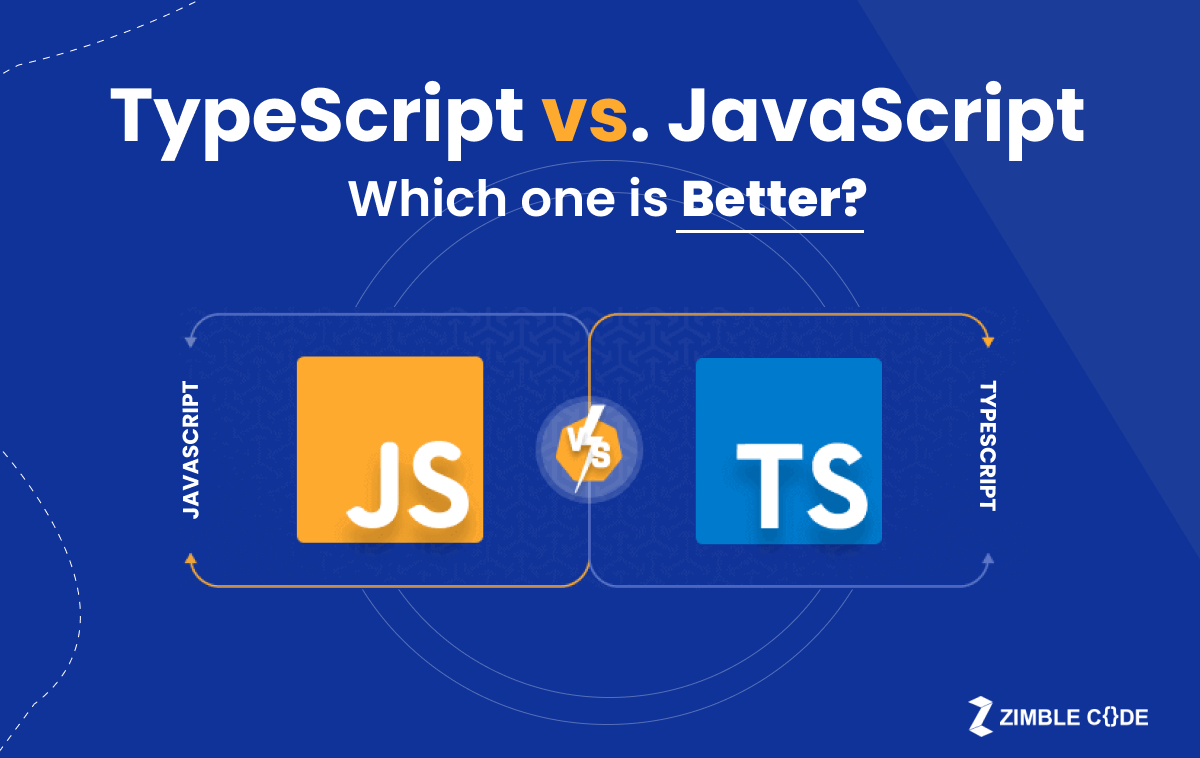The common question that thrives in programming is: Which script should you choose before you hire iOS app developers in Miami?
TypeScript (TS) and JavaScript (JS) are the most popular technologies used widely in the programming world. But which one is a better choice – confuses every developer? Though they are pretty similar, numerous attributes show their presence in a particular script, only making them different from each other.
This blog will explain the main contrast between these two programming languages. This will help you get a clear picture of JS and TS as object-oriented programming languages and which one is the most trending language to focus on by a developer.
Before we delve deeper into the land of programming languages and decide who wins in this competition, let’s learn about them in brief.
What is Javascript?
JavaScript started its journey in 1995 as an alternative to a programming language with various dynamic elements, easily understandable by even non-developers. It also provided the initial support to the HTML and CSS, allowing the web developers to create dynamic web pages without much difficulty. Since then, it has become the primary language used for web development with timely updates and adjustments.
This high-level language is multi-paradigm and supports both functional and event-driven programming. In fact, its dynamic typing feature allows the developers to eliminate code overloading due to the requirement of different types of variables. Moreover, it is also designed for the client-side implementation and allows your developers to add engines to the script to run it on the server according to the browser type.
However, the major drawback of this high-level language is the involvement of complicated code structure in the programming.
Undoubtedly, this language serves as the best option for developing small and medium applications. But simultaneously, the same coding becomes quite complicated to maintain and reuse in the case of enterprise development.
What is TypeScript?
The TypeScript language is a superset of JavaScript, entered the market in 2012 as a solution to the complex architecture of Javascript. This indicates that this language can be used easily to code the developers’ front-end and back-end, making it the best solution for large projects. Moreover, it is quite easy to maintain as it keeps off the unnecessary tangles in the server.
More precisely, this language supports dynamic and static typing and offers inheritance features like namespaces, unions, interfaces, classes, and others that may not run smoothly in JS. Therefore, TS can be used for both server-side and client-side applications with full-fledged IDE support and ease to debug, unlike JS.
Which one is better: JavaScript Vs. TypeScript?
The mobile app development company in the USA needs to analyze the following factors before making a choice between JavaScript and TypeScript:
Typing:
JS supports dynamic typing that allows your developers to change the type of variable every time with ease. Thereby, it saves a lot of developer’s time and also reduces the code volume. However, dynamic typing often increases the risk of run-time errors, adding up more work burden later. On the other hand, TS supports both static and dynamic typing, allowing the coders to switch the type based on the project requirement. Therefore, codes under TS are more structured and depict a better performance rate with few run-time errors than JS.
Compilation:
In JavaScript, there is no need to compile the codes as it is an interpreted language. However, in the case of TypeScript, the codes are translated into plain JS first and then compiled. It might sound a bit tedious but can save more time and effort. The JS developers are supposed to put a lot of effort into dealing with the numerous run-time errors. Whereas TS checks the codes automatically for any syntactical and semantical errors to debug them as and when they arise.
Object-Oriented Programming (OOP):
Though both the programming languages support OOP, they don’t have a fixed set of rules to follow, unlike C++ or Java. JavaScript follows the ECMAScript standards and is partly object-oriented with a prototype as their central unit. On the other hand, Typescript is a class-based programming language that supports all the OOP principles, providing autonomy to the coders regarding its use as per the needs.
Project Size:
Being a lightweight interpreted language, javascript was initially designed for small web applications. On the other hand, it was utterly pointless to use TypeScript for such small and medium-sized applications as TS is neither lightweight nor supports the cross-platform wholly. In fact, JavaScript is a much more suitable choice for smaller applications, whereas TypeScript goes for large complex projects. JS permits dynamic typing with no translation requirement, whereas TS avoids complex workflows with dynamic and static typing.
Who is the Winner?
The TypeScript language can be the winner of this competition. The fusion of its static and dynamic typing with the OOP approach makes it a perfect choice for large coding projects. Furthermore, it is a clear and documented language that offers your developers an added advantage in the long run.
However, JavaScript is still a widely accepted choice based on the current coding community. It has been ruling the market for years now and is quite supportive. On the other hand, Typescript has not yet gained that kind of popularity, thereby ruling over a small community only.
Therefore, it can be said that both JS and TS languages are interrelated to finding out the best solutions to coding problems. But it is essential for your top mobile app development company in Miami to always consider the project size and other factors before implementing either of them. This will ultimately help you make your project successful and deal with TypeScript vs. JavaScript competition in a win-win situation.








Superb information here, you have shared informative blog.
Good work, keep it up..